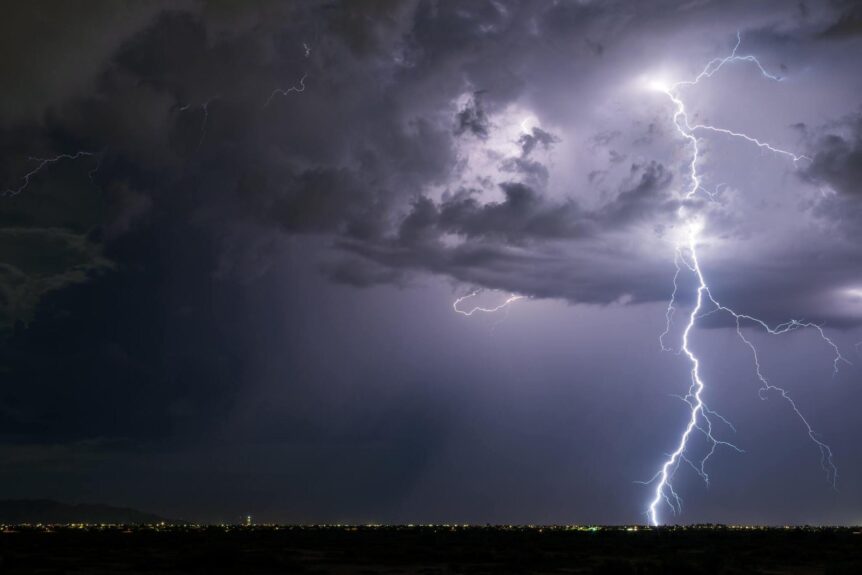In the aftermath of the devastating Hurricane Idalia, which struck the Gulf Coast of the United States in 2023, communities grappled with the profound impacts left in its wake. As the dust settled and recovery efforts began, experts scrutinized the effects and lessons gleaned from this formidable storm. Here are four pivotal takeaways from the tumultuous passage of Hurricane Idalia.
4 Takeaways from Hurricane Idalia
-
Storm surge was damaging
Idalia’s landfall occurred in an area where natural barriers such as wetlands and forests typically offer some protection against storm surges. However, the storm’s powerful surge overwhelmed these defenses, flooding coastal towns across Taylor, Dixie, and Levy counties. Along the Steinhatchee River, water levels rose an astonishing 7 feet in just one hour, emphasizing the rapid and dangerous nature of the surge.
Former NOAA scientist Jeff Masters highlighted the importance of timely evacuation, noting that waiting until the surge begins can be too late. Even areas like Tampa Bay, over 100 miles away from Idalia’s center, experienced significant surges, underscoring the region’s vulnerability. The devastating impact was evident in communities like St. Petersburg’s Shore Acres neighborhood, where nearly half the homes suffered damage from the inundation.
-
Different causes led to deadly incidents
Hurricane Idalia tragically claimed the lives of 12 individuals in the United States. These fatalities resulted from direct and indirect causes, showcasing the diverse dangers of such storms. Direct deaths caused by the physical forces of the storm, like flooding or debris strikes, totaled eight, with rip currents and rough seas being significant contributors.
There were four indirect deaths, which often stem from storm-related conditions or activities. These included incidents such as vehicle crashes during evacuation attempts and fatalities related to post-storm cleanup efforts. Interestingly, while the direct deaths were primarily concentrated outside Florida, indirect deaths were more prevalent within the state, suggesting varying levels of preparedness and response across regions.
-
The financial toll was high
Hurricane Idalia inflicted approximately $3.6 billion in damage, with the Big Bend region bearing the brunt of the destruction. Agriculture suffered significant losses, with crops, livestock, and infrastructure all impacted by the storm’s ferocious winds. Despite the considerable economic impact, experts noted that the damage could have been far worse had Idalia targeted a more densely populated area.
The storm’s relatively low ranking among the country’s most expensive storms was attributed partly to its landfall in a less populated region. However, the potentially catastrophic consequences of a higher storm surge underscored the importance of preparedness and mitigation efforts in vulnerable coastal areas.
-
Forecasting can’t predict everything
Despite advancements in meteorological technology, forecasting still needs to be improved. Hurricane Idalia’s early formation caught forecasters somewhat off guard, highlighting the inherent challenges in predicting the behavior of complex weather systems. However, as the storm progressed, forecasters homed in on its track, providing crucial information to affected communities.
While the storm’s intensity fluctuated, forecasters generally anticipated its rapid intensification and subsequent weakening phases. This demonstrated the evolving accuracy of forecasting models in predicting a storm’s behavior, even in the face of uncertainties surrounding factors like intensity and timing.
Need Help Getting Compensation For Your Storm Damage?
Now that we have the Hurricane Idalia update, recovery efforts are paramount for affected individuals and communities. If you’re grappling with the aftermath and find yourself navigating the legal complexities of storm-related insurance claims or seeking compensation for damages, RRBH Law is here to offer assistance. Serving a wide range of areas throughout Florida, our team stands ready to provide expert guidance and support. Contact RRBH Law at 305-800-4663 to learn more about your options.
As we reflect on the lessons learned from Hurricane Idalia, it’s clear that preparation, resilience, and community support are essential in mitigating the impacts of future storms. By understanding and implementing these key takeaways, we can better protect ourselves and our communities from the wrath of nature’s most powerful phenomena.

